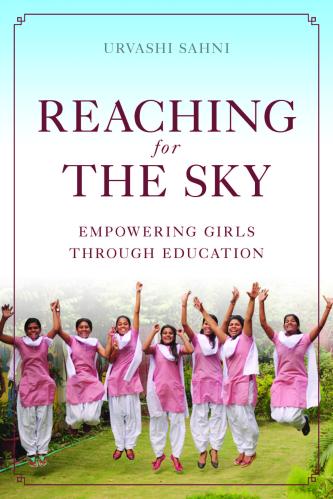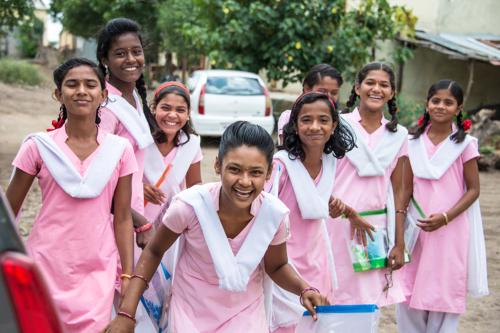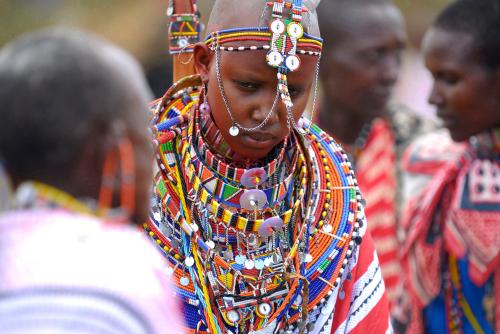This is one in a series of blog posts introducing the Center for Universal Education’s 2017 Echidna Global Scholars.
In Mexico, the opportunity to attend primary school is nearly equal for girls (49 percent) and boys (51 percent). Educational infrastructure has also been improving in the country through the construction of schools in rural areas. Despite this, the rates of out-of-school students are considerably higher among indigenous peoples (16.3 percent) than non-indigenous populations (6 percent). Research shows that indigenous girls in Mexico are more vulnerable than other girls, not only because of unequal treatment within the family and community but also because of discrimination against ethnic groups.
Indigenous populations in Mexico are identified either by self-identification or in reference to their language. According to the National Institute of Indigenous Languages (INALI), more than 68 linguistic groups coexist in Mexico. However, primary education continues to be taught primarily in Spanish to children whose mother tongue is indigenous, which contributes to an uneven learning process in classrooms.
Indigenous girls have to overcome multiple sociocultural barriers to obtain an education. Burdensome household work such as cleaning, caring for other children, and cooking is by custom attributed to women and girls and often keeps them out of school. In the southern Yucatan Peninsula, for example, school attendance for girls averages 8 years while rural Maya communities average only 5 years of schooling. The ability to attend school also regularly depends on the availability of transportation, which in rural areas is often inadequate. In addition, there are patriarchal hierarchies that limit the advancement of girls’ education. As a result, girls see their opportunities for professional development and economic self-sufficiency considerably diminished.
The Importance of Education for Indigenous Populations
According to the National Council for the Evaluation of Social Development Policy (CONEVAL), 73 percent of indigenous people are living in poverty in Mexico. Research has shown that education plays a major role in addressing poverty by increasing individuals’ expectations and motivations to achieve better standards of living and well-being. Ensuring equal opportunities at all levels of education is an element of social change not only for the benefit of women, but also for their children, their family, and the community at large.
Several studies conducted by Inmujeres, a Mexican federal institution that contributes to the advancement of gender equity in Mexican society, show that higher levels of education lead to improvements in women’s reproductive health, increases in productivity and income, and a greater degree of freedom and power over their life. As Amartya Sen notably argued, education is a strategic factor in improving the social status of women and can lead to relations that are more egalitarian and increase their standard of living, while allowing them to fight against the intergenerational transmission of poverty that happens in the absence of better opportunities. It is also important to recognize that gender inequality in education can lead to unequal participation in the labor market and in public life.
The New Educational Model, Mexico’s latest educational reform, is based on skills development and lifelong learning, and would help to ensure the inclusion of a greater number of indigenous girls in the classrooms. The Maya girls’ context, however, has yet to be fully understood. Mexico’s education policy plans and government programs promote a more gender-inclusive education, but it is important to emphasize that equal educational opportunities do not only depend on such policies. Rather, it is essential to also consider that some of the elements affecting gender equality in education are related to other societal factors, such as family relationships, perceptions of gender roles in society, and expectations and daily practices within households and communities.
As an Echidna Global Scholar, I am conducting research that will explore the cultural barriers Maya girls have to overcome within their rural communities. Preliminary findings from my field research have demonstrated that an indigenous Maya girl is more likely to continue studying if she has a positive female role model who has completed university. For example, one primary school student expressed her admiration for her sister saying, “When I grow up I would like to be a teacher like her.” Another girl, a high school student who wants to be a lawyer, mentioned in reference to a female church leader, “I really admire her, I want to help people like she does.”
In this sense, it is necessary to produce leadership roles that the girls want to follow and to utilize the experience of Maya women who are political decisionmakers, entrepreneurs, doctors, engineers, and teachers in order to encourage girls and their parents to make decisions that encourage schooling for girls.
With girls’ perspectives at the core and the participation of strategic community leaders and female aspirational models, the aim of my research is to support indigenous girls in their educational path to a more respected, well informed, and socially accepted position in Mexican society.






Commentary
Is social inclusion happening for indigenous girls in Mexico?
August 3, 2017